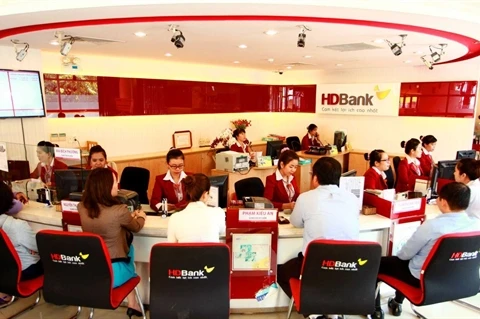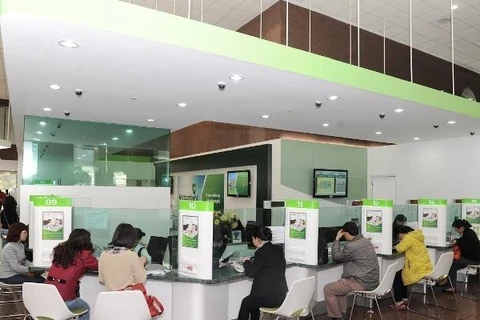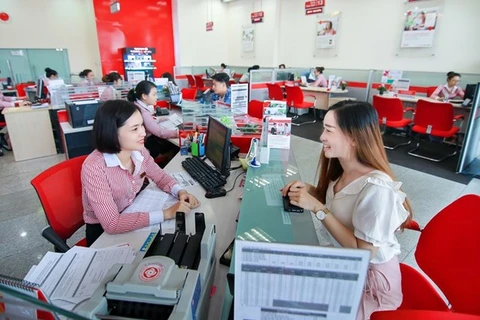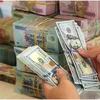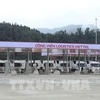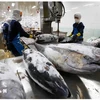
Hanoi (VNS/VNA) - Many banks have recently announced plans to significantly increase charter capital to improve the capital adequacy ratio (CAR) and strengthen financial potential for credit and business expansion.
Techcombank has presented to shareholders a plan to increase capital from nearly 35.23 trillion VND to more than 70.45 trillion VND through issuing shares from equity sources. Under the plan, the bank’s shareholders who own 100 shares will receive 100 new shares.
At the annual general meeting (AGM) of Military Bank (MB), a proposal to increase charter capital by some 8.58 trillion VND in 2024 was approved. Besides the capital increase of nearly 7.96 trillion VND through stock dividends, MB will continue its plan to make private placement of an additional 62 million shares, equivalent to a charter capital increase of 620 billion VND. Implementation time for the plan is from 2024 to the second quarter of 2025.
Shareholders of LPBank has also approved a plan to offer up to 800 million additional shares to existing shareholders to increase charter capital from nearly 25.58 trillion VND to nearly 33.58 trillion VND at the minimum offering price of 10,000 VND per share.
The same plans have also been seen at SeABank, OCB, ACB, VIB and Nam A Bank, of which SeABank will increase its charter capital by more than 5 trillion VND to 30 trillion VND; OCB by nearly 4.17 trillion VND to nearly 24.72 trillion VND; ACB by 5.8 trillion VND to more than 44.66 trillion VND; VIB by more than 4.4 trillion VND to 29.79 trillion VND; and Nam A Bank by nearly 3.15 trillion VND to more than 13.72 trillion VND.
Latest statistics of the State Bank of Vietnam show as of January 2024, the total charter capital of the entire banking system was more than 1 quadrillion VND, an increase of 0.7% compared to the end of 2023. Of the total, the group of State-owned banks had a total charter capital of 217.88 trillion VND, equivalent to the end of 2023; the group of joint stock commercial banks had a total charter capital of 543.19 trillion VND, an increase of 0.12%; and the group of joint venture and foreign banks had a total charter capital of nearly 163.17 trillion VND, unchanged compared to the end of 2023.
The capital adequacy ratio (CAR) of credit institutions and foreign bank branches according to Circular 41/2016/TT-NHNN as of January 2024 reached 11.84%, of which the groups of State-owned commercial banks and joint stock commercial banks reached 9.72% and 11.89%, respectively.
According to experts, the need to raise charter capital stems from requirements of improving the CAR, increasing the risk provision ratio, rising medium and long-term capital sources, and promoting investment in technology.
Banking expert Nguyen Tri Hieu said though the CAR of Vietnamese banks has improved, it still has not reached international standards and the average level of the banking industry in the region. The CAR of Vietnamese banks is still at low level compared to that of Indonesia (22.6%), the Philippines (17.2%), Singapore (17.1%), Thailand (19.6%) and Malaysia (18.5%).
Hieu said, many banks in Vietnam have not fully implemented the pillars of international banking standard Basel II, while some countries in the region have applied Basel III or part of it so charter capital increase is considered necessary to improve financial capacity and ensure the stability of the Vietnamese banking system.
It is forecast that 2024 will continue to be a challenging year for the banking industry as bad debt risks tend to increase. Therefore, charter capital will play an important role as a buffer to provide necessary resources for banks to cope with challenges and fluctuations in an unstable economic environment./.
